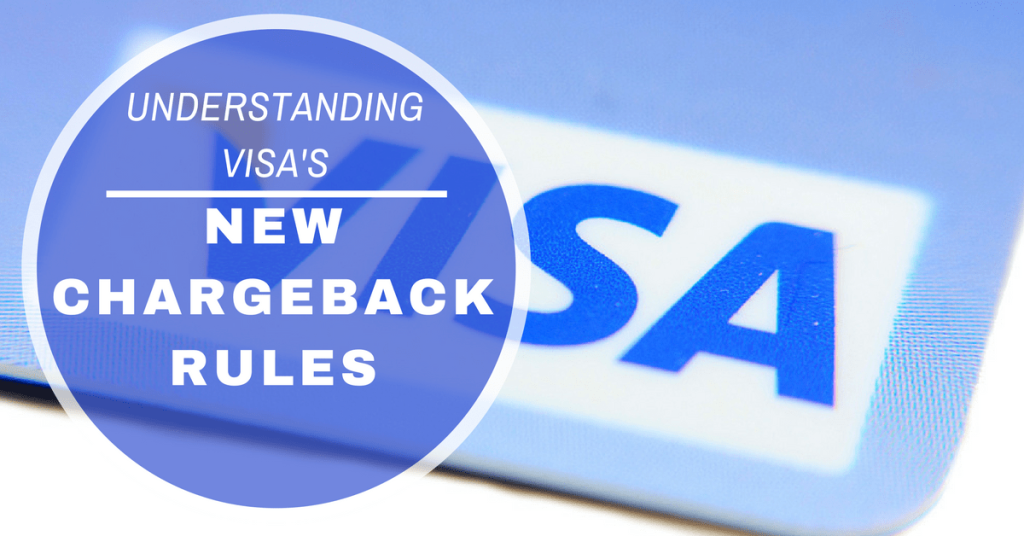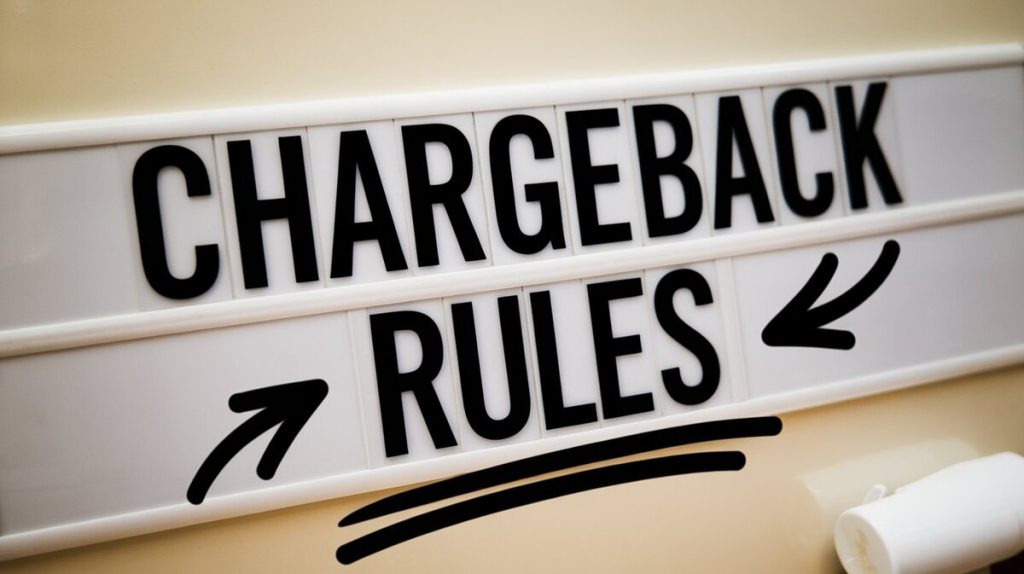Introduction
Visa chargebacks are a critical part of payment processing, protecting consumers from fraudulent transactions but posing challenges for merchants. Understanding Visa’s chargeback rules is essential for minimizing financial losses and maintaining a healthy merchant account.
What is a Visa Chargeback?
A chargeback is a transaction reversal initiated by the cardholder’s bank to resolve a disputed transaction. This process protects consumers but can result in lost revenue and additional fees for merchants. Visa, as one of the largest payment networks, has specific rules for managing chargebacks. Merchants must understand these rules to avoid common issues and manage their chargeback ratios effectively.
Key Changes in Visa Chargeback Rules (2023 Updates)
In 2023, Visa updated its chargeback process with the introduction of Compelling Evidence 3.0, aimed at reducing fraud and improving dispute resolution. This mandate requires merchants to provide clear evidence that the cardholder authorized the transaction and that the goods or services were delivered as agreed. This change is especially relevant for combating “friendly fraud,” where a cardholder disputes a legitimate transaction.
Table 1: Key Differences Between Visa Chargeback Rules Before and After 2023 Updates
| Aspect | Before Compelling Evidence 3.0 | After Compelling Evidence 3.0 |
|---|---|---|
| Dispute Categories | 22 | 52 |
| Required Evidence | Limited | Specific and robust |
| Response Time | 30 days | 20 days |
| Liability Shift for Fraud | Pre-2023 rules applied | Fraud-related chargebacks may shift liability to merchants |
| Use of VisaNet | Limited | Expanded use to gather and verify transaction details |
Visa Chargeback Process
The Visa chargeback process involves several steps designed to ensure both parties can present their case:
- Dispute Initiation: The cardholder contacts their issuing bank to dispute a transaction.
- Chargeback Filing: The issuing bank reviews the dispute and, if valid, initiates a chargeback.
- Merchant Notification: The merchant’s acquiring bank notifies the merchant of the chargeback.
- Merchant Response: The merchant has 20 days to provide evidence disputing the chargeback.
- Visa Review: Visa reviews the evidence and makes a ruling.
- Resolution: The chargeback is either upheld or reversed based on the evidence.

Visa Dispute Categories and Reason Codes
Visa categorizes chargebacks into several dispute categories, each with specific reason codes. Understanding these categories is crucial for responding effectively.
1. Fraud:
- Reason Code 10.4 – Other Fraud (Card Absent Environment): Common in e-commerce transactions where the cardholder claims they didn’t authorize the transaction.
2. Authorization Issues:
- Reason Code 11.3 – Authorization Not Obtained: Occurs when a transaction is processed without proper authorization.
3. Processing Errors:
- Reason Code 12.6.1 – Duplicate Processing: Happens when a single transaction is processed more than once.
4. Consumer Disputes:
- Reason Code 13.3 – Goods or Services Not as Described: When a cardholder claims the goods or services received differ from what was advertised.
Table 2: Top Visa Chargeback Reason Codes and Their Implications
| Reason Code | Category | Description | Implication for Merchant |
|---|---|---|---|
| 10.4 | Fraud | Cardholder disputes unauthorized transaction in card-not-present environment | High risk of fraud-related chargebacks |
| 11.3 | Authorization Issues | Transaction processed without obtaining proper authorization | Merchant may face penalties and fees |
| 12.6.1 | Processing Errors | Duplicate processing of the same transaction | Requires immediate attention to correct errors |
| 13.3 | Consumer Disputes | Goods or services not as described by the merchant | May lead to increased chargeback ratios |
Preventing Chargebacks
Prevention is key to minimizing chargebacks. Here are some proven practices:
- Use Secure Payment Technologies:
- Implement EMV chip technology for in-person transactions to reduce counterfeit fraud.
- Use 3-D Secure 2.0 for online transactions to authenticate cardholders.
- Maintain Clear Communication:
- Provide clear and detailed product descriptions and terms of service on your website.
- Ensure billing descriptors on card statements are recognizable to customers.
- Keep Accurate Records:
- Maintain comprehensive records of all transactions, including receipts, delivery confirmations, and communications with customers.
- Monitor and Respond Promptly:
- Regularly monitor chargeback ratios and address disputes swiftly. Merchants should aim to keep chargeback ratios below 1% to avoid penalties.
- Partner with Experts:
- Consider partnering with chargeback prevention services. Merchanto.org, an official partner of Visa and MasterCard, offers solutions to minimize disputes. Visit Merchanto.org to learn more.
Table 3: Best Practices for Chargeback Prevention and Their Benefits
| Practice | Description | Benefit |
|---|---|---|
| EMV Chip Technology | Uses embedded microchips to verify card authenticity | Reduces card-present fraud by up to 80% |
| 3-D Secure 2.0 | Adds an extra layer of authentication for online transactions | Lowers the risk of unauthorized online transactions |
| Clear Billing Descriptors | Ensures customers recognize the transaction on their statement | Decreases chargeback rates related to billing confusion |
| Comprehensive Record Keeping | Maintains detailed transaction records for disputes | Improves chances of winning chargeback disputes |
| Chargeback Prevention Partner | Partners like Merchanto.org offer tailored solutions | Can reduce chargeback rates by up to 90% |

Responding to Chargebacks
When a chargeback is received, timely and accurate response is crucial. Here’s how merchants should handle chargeback disputes:
- Gather Evidence: Collect all relevant documentation, such as transaction records, delivery receipts, and communication logs.
- Submit Compelling Evidence: Ensure the evidence meets the requirements specified by Visa’s Compelling Evidence 3.0 rule.
- Follow Deadlines: Visa’s rules are strict about timelines. Merchants typically have 20 days to respond to a chargeback notice.
- Use Clear Communication: When submitting evidence, include a clear and concise explanation that directly addresses the reason code under dispute.
Impact of High Chargeback Ratios
High chargeback ratios can have severe consequences for merchants. Visa and Mastercard monitor chargeback activity and impose penalties on those who exceed acceptable thresholds.
- Visa’s Dispute Monitoring Program (VDMP):
- Thresholds: Merchants with a chargeback ratio exceeding 0.9% may enter the VDMP.
- Penalties: Merchants in the VDMP may face fines and increased processing fees.
- Termination Risks: Merchants with consistently high chargeback ratios risk having their merchant accounts terminated by their acquirer, impacting their ability to process payments.
Conclusion
Visa’s chargeback rules are complex but essential for managing disputes. By staying informed, implementing best practices, and responding promptly to disputes, merchants can protect their revenue and maintain good standing with payment processors.
Key Takeaways:
- Compelling Evidence 3.0 is a significant update requiring merchants to provide robust evidence in chargeback disputes.
- Maintaining a low chargeback ratio is crucial to avoid penalties and maintain good standing with payment processors.
- Best practices like using secure payment technologies, clear communication, and accurate record-keeping are crucial for preventing chargebacks.



